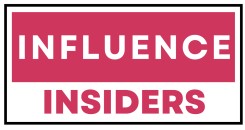
Understanding lower funnel marketing for influencers
Why the Lower Funnel Matters for Influencers
In digital marketing, the funnel describes the journey people take from discovering a brand to becoming loyal customers. For influencers, understanding the lower funnel is essential to move beyond awareness and actually drive product purchases or service sign-ups. While upper funnel activities like brand awareness and engagement are important, the bottom funnel is where real business results happen.
The lower funnel, also called the bottom funnel, focuses on converting prospects who already know about a product or service into paying customers. This stage is about more than just exposure—it’s about using marketing tactics that help people make a decision and take action. Influencers who master lower funnel marketing can show brands they deliver measurable outcomes, not just likes or shares.
- Upper funnel: Builds awareness and attracts potential customers
- Lower funnel: Encourages purchase, sign-up, or other conversion actions
Lower funnel strategies often include retargeting ads, limited time offers, live chat support, and case studies that address specific customer pain points. Influencers can use these tactics to guide their audience through the customer journey, making it easier for people to trust a product or service and take the final step.
For influencers, aligning with the lower funnel means partnering with brands to create content that addresses the needs of potential customers at the decision stage. This approach not only increases the value influencers bring to brands but also helps build long-term trust with their audience. To learn more about how these strategies fit into the broader marketing efforts, check out this resource on understanding business communication tools.
Building trust to move followers closer to conversion
Trust as the Bridge Between Awareness and Action
At the bottom of the marketing funnel, trust becomes the deciding factor for prospects considering a purchase. While upper funnel marketing focuses on building awareness, the lower funnel is where people evaluate whether a product or service truly fits their needs. Influencers who want to move potential customers closer to conversion need to focus on credibility and transparency in every piece of content.
- Showcase real experiences: Share authentic reviews, case studies, or even live chat sessions with customers who have used the product. This helps followers see the real-world value of the products or services you promote.
- Address objections: Use your platform to answer common questions or concerns. This can be done through stories, Q&A sessions, or detailed posts that clarify how the product solves specific problems.
- Highlight limited time offers: When appropriate, mention exclusive deals or limited time discounts. This adds urgency, helping prospects move from consideration to purchase at the bottom funnel stage.
Trust is not built overnight. Consistent, honest communication and a willingness to show both the strengths and limitations of a product or service will help influencers stand out in a crowded digital marketing space. These strategies not only support your marketing efforts but also foster long-term relationships with your audience, making your business a reliable source for product recommendations.
For more on how naming and branding can influence trust and action, check out this guide on crafting effective names for AI SaaS products.
Crafting content that encourages action
Turning Followers into Action-Takers
At the bottom of the marketing funnel, the goal is to move potential customers from interest to purchase. For social media influencers, this means creating content that not only engages but also drives action. The right strategies can help bridge the gap between awareness and conversion, making your marketing efforts more effective.
- Clear Calls to Action (CTAs): Use direct language that tells people exactly what you want them to do. Whether it’s “Shop now,” “Try this product,” or “Sign up today,” clarity helps guide prospects through the customer journey.
- Showcase Real Results: Share case studies, testimonials, or before-and-after stories. These marketing tactics build trust and demonstrate how your product or service solves real problems for customers.
- Leverage Limited-Time Offers: Creating urgency with limited time deals or exclusive discounts can motivate followers to act quickly. This is especially effective at the lower funnel stage, where prospects are close to making a purchase decision.
- Use Retargeting Ads: Digital marketing tools like retargeting ads help you reach people who have already interacted with your content. These ads remind potential customers about your brand and encourage them to complete their purchase.
- Enable Live Chat or Q&A: Offering live chat or interactive Q&A sessions allows you to address concerns in real time. This personal touch can help move prospects from the consideration stage to becoming loyal customers.
Remember, crafting content for the bottom funnel is about more than just promotion. It’s about understanding where your audience is in the marketing funnel and providing the right information at the right time. By focusing on the needs and motivations of your potential customers, you can create marketing strategies that drive real results for your business and the brands you represent.
For a deeper look at how influential figures shape purchase decisions and drive conversions, check out this analysis of influencer impact on modern investors.
Leveraging data and insights for better targeting
Using Analytics to Understand Your Audience
When it comes to lower funnel marketing, understanding your audience is key. Social media platforms offer a wealth of data that can help influencers identify which followers are most likely to become customers. By analyzing engagement metrics, click-through rates, and conversion data, you can see which content resonates at the bottom funnel stage. This insight allows you to refine your marketing strategies and create content that speaks directly to potential customers who are ready to make a purchase.Personalizing Content for Higher Conversions
Data-driven insights empower influencers to tailor their messaging for different segments of the marketing funnel. For example, people at the upper funnel may need more educational content, while those at the lower funnel respond better to product demos, case studies, or limited time offers. By segmenting your audience and customizing your content, you help move prospects closer to the purchase decision. This approach not only increases trust but also boosts the effectiveness of your marketing efforts.- Use retargeting ads to re-engage people who have shown interest in your product or service.
- Leverage live chat features to answer questions and address concerns in real time, reducing friction in the customer journey.
- Test different marketing tactics and measure which ones drive the most conversions at the bottom funnel stage.
Optimizing Campaigns with Real-Time Feedback
Social media gives you immediate feedback on your marketing campaigns. Monitor which posts, stories, or ads generate the most engagement and conversions. Use this information to adjust your strategies on the fly. For example, if a particular product post is driving more sales, consider boosting it with paid ads or creating similar content. This agile approach ensures your marketing funnel remains effective and responsive to your audience's needs.Aligning with Brand Goals
Collaborating with brands means aligning your content and data insights with their business objectives. Share your findings about what works at the lower funnel stage, and suggest strategies that will help both you and the brand achieve better results. By demonstrating expertise in funnel marketing and a commitment to measurable outcomes, you position yourself as a valuable partner for brands looking to drive real results through social media influence.Collaborating with brands for seamless lower funnel campaigns
Creating Synergy Between Influencers and Brands
When it comes to the bottom of the marketing funnel, collaboration between influencers and brands is crucial for driving real results. At this stage, the focus shifts from awareness to conversion, making it essential for both parties to align their strategies and messaging.- Shared Goals: Influencers and brands should define clear objectives for the campaign. Whether the aim is to increase product purchases, drive sign-ups, or boost limited time offers, clarity ensures everyone is working toward the same outcome.
- Consistent Messaging: The content shared by influencers must reflect the brand’s voice while staying authentic to the influencer’s style. This consistency helps potential customers trust the message as they move through the customer journey.
- Integrated Marketing Tactics: Combining influencer content with retargeting ads, live chat support, and exclusive offers can help move prospects from the upper funnel to the lower funnel. This integrated approach maximizes the impact of digital marketing efforts.
Streamlining the Customer Journey
Seamless collaboration means influencers have access to the right product information, case studies, and marketing assets. This empowers them to create content that addresses the needs of potential customers at the bottom funnel stage. For example, sharing customer testimonials or demonstrating how a product service solves real problems can help prospects feel more confident about making a purchase. Brands can also support influencers by providing insights from previous campaigns, helping them tailor their messaging for different segments of the marketing funnel. This data-driven approach ensures that marketing strategies are always evolving to better serve the business and its customers.Optimizing for Conversion
To help influencers drive action, brands should:- Offer exclusive deals or bundles for the influencer’s audience
- Provide clear calls-to-action that guide people toward the next step
- Enable easy tracking of conversions to measure the effectiveness of marketing efforts
Measuring success and optimizing future efforts
Tracking Conversions and Analyzing Results
Once your lower funnel marketing strategies are in motion, it’s essential to measure how well your efforts are turning prospects into customers. Influencers who focus on the bottom of the funnel need to go beyond likes and shares. Instead, look at metrics that reflect real business impact, such as:
- Click-through rates on product or service links
- Number of purchases or sign-ups driven by your content
- Use of unique promo codes or affiliate links
- Engagement with retargeting ads
- Customer journey completion rates
These data points help you understand which marketing tactics are most effective at converting potential customers. Use analytics tools provided by social media platforms, as well as brand partners’ tracking systems, to gather this information. If you’ve integrated live chat or limited time offers in your content, monitor how these elements influence the customer’s decision to purchase.
Optimizing for Better Results
After reviewing your results, look for patterns. Are certain types of content or specific products and services performing better at the bottom funnel stage? Do retargeting ads help move people from the upper funnel to the lower funnel more efficiently? Use these insights to refine your future marketing efforts.
- Test different calls to action to see what motivates your audience
- Experiment with new formats, like case studies or testimonials, to build trust
- Adjust your messaging based on what resonates with your potential customers
Continuous improvement is key. By regularly analyzing your funnel marketing performance, you’ll help brands achieve better results and strengthen your own reputation as a trusted partner in digital marketing campaigns.













